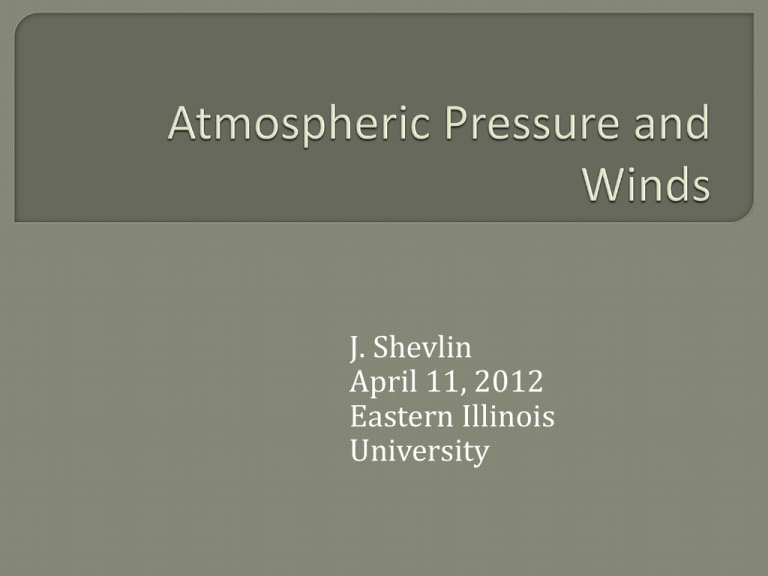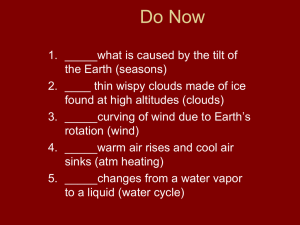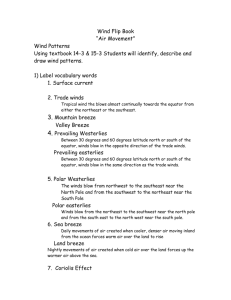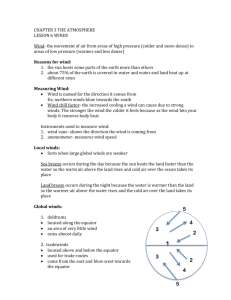Wind - Images
advertisement

J. Shevlin April 11, 2012 Eastern Illinois University What is wind? What causes wind to form? At the end of class, you will be able to: • Relate air pressure and wind direction • Explain why winds flow in a curved direction • Discern global winds from local winds • Describe the three main global wind patterns on Earth • Explain two types of local wind patterns Wind Coriolis effect Jet stream Trade winds Westerlies Polar easterlies Wind is air in motion. • Formed by differences in pressure Caused by uneven heating of the atmosphere Law of diffusion: moves from high to low Greater pressure difference = faster winds H L Why doesn’t wind blow directly from the poles to the equator? Why doesn’t wind blow directly from the poles to the equator? Thought to consider: is the Earth in a fixed position? Wind movement affected by Earth’s rotation • Results in a curved path of motion • Depends on hemisphere you are in Northern hemispherewinds curve to the right Southern hemispherewinds curve to the left The Coriolis effect is the curving motion of objects caused by the Earth’s rotation Global winds • Pattern of circulation across the Earth • Travel great distances • Travel in a specific direction Local winds • Travel short distances • Can blow from any direction Trade Winds Westerlies Polar Easterlies Doldrums Horse Lattitudes What do you think may cause global wind patterns? What do you think may cause global wind patterns? Thoughts to consider: Are regions of high pressure only ever near the poles? Are regions of low pressure only ever near the equator? High pressure belts near 30oN, 30oS Low pressure belts near 60oN, 60oS Result in patterns of rising and sinking air • Sounds familiar…Convection? Jet stream- narrow belt of high speed winds • Found in upper troposhere, lower stratosphere • Do not follow regular patterns Change positions frequently • Affect weather movement Local winds are affected by an area’s geography • Results in wind blowing from any direction • Examples: Sea breeze Land breeze Why does breeze travel one way in the daytime and in the other direction during the nighttime? Thoughts to consider: is ground a good conductor of heat? Is water a good conductor of heat?






